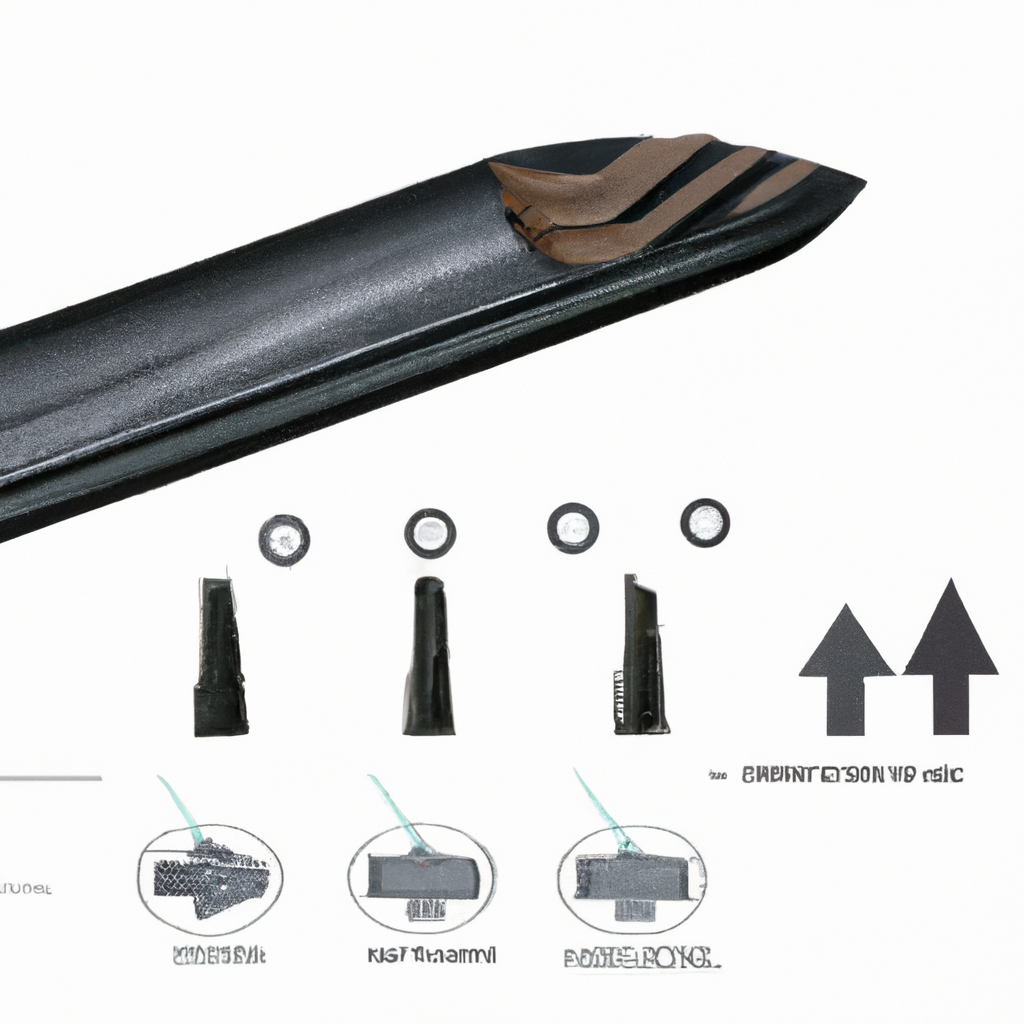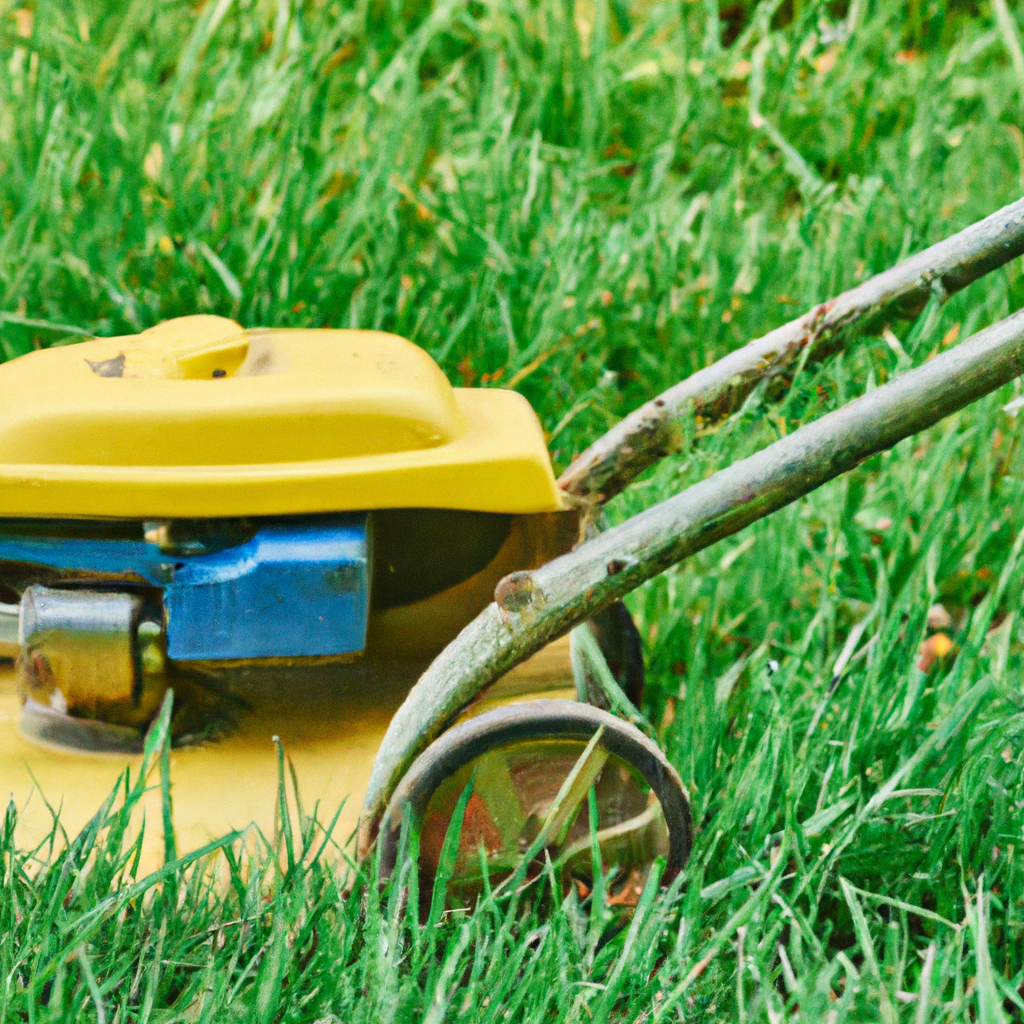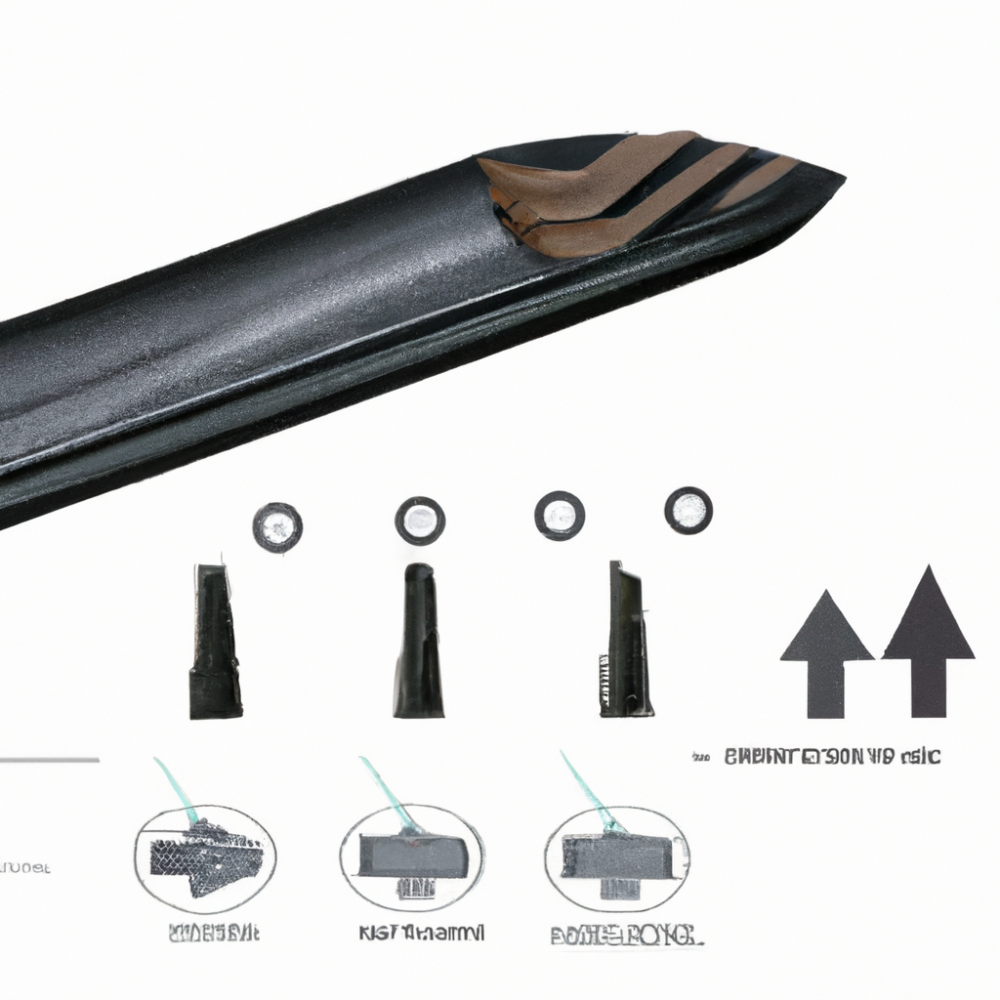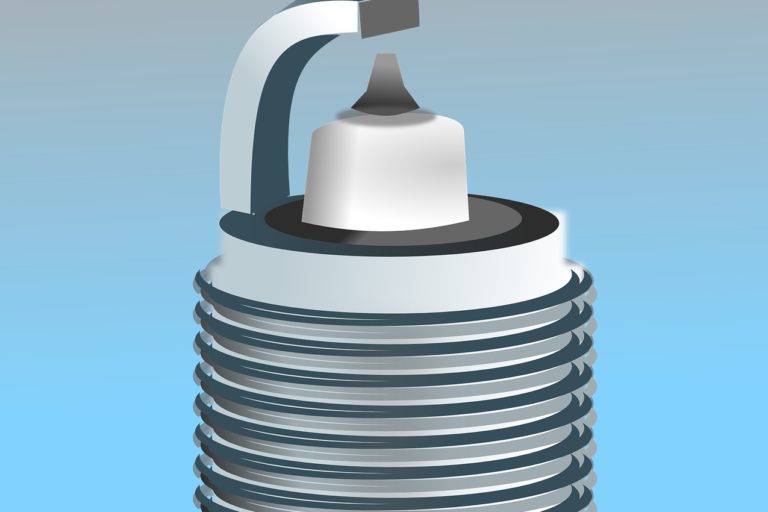Have you ever wondered how to tell if your electric mower’s blade needs to be replaced? Keeping your lawn looking its best requires a sharp and efficient blade, but over time, wear and tear can take its toll. In this article, we will explore the telltale signs that indicate it’s time to swap out your electric mower’s blade. From decreased cutting efficiency to uneven grass height, knowing these signs will help you maintain a healthy and vibrant lawn. So, let’s dive in and learn how to keep your mower running smoothly for years to come!
1. Uneven Cutting
1.1 Grass Height Variation
One of the first signs that your electric mower’s blade needs replacement is uneven cutting. If you notice that some areas of your lawn have longer grass than others, it could be a clear indication that the blade is no longer cutting evenly. Uneven cutting can result in an unsightly lawn, making it important to address this issue promptly.
1.2 Patchy Lawn Appearance
In addition to grass height variation, a patchy lawn appearance can also indicate a dull or damaged blade. If you notice that there are bare spots or patches of shorter grass in your lawn, it may be a sign that the blade is not cutting the grass evenly. This can be due to a variety of factors such as a dull blade, blade imbalance, or even blade damage. It’s important to address this issue to ensure a healthy and lush lawn.
2. Reduced Cutting Performance
2.1 Longer Mowing Time
Another sign that your electric mower’s blade may need replacement is a significant increase in mowing time. If you find that it is taking you much longer to mow your lawn than usual, it could be a sign that the blade is no longer performing at its best. A dull or damaged blade will struggle to cut through the grass efficiently, resulting in a longer mowing time.
2.2 Struggling or Overheating Motor
A struggling or overheating motor is another indicator that the blade requires replacement. If you notice that your electric mower’s motor is working harder than usual or getting hotter than normal, it could be a sign of a dull blade that is putting extra strain on the motor. If this issue persists, it is essential to replace the blade to avoid damaging the motor or other components of your mower.
2.3 Frequent Clogs or Grass Clumping
Frequent clogs or grass clumping can also be a sign of a blade that needs replacement. If you find that your electric mower is frequently clogging or that the grass is clumping together instead of being evenly dispersed, it may be due to a dull or damaged blade. A dull blade can struggle to cut the grass cleanly, leading to clumping and clogs in the mower deck. Replacing the blade can help prevent this issue and improve cutting performance.

3. Ragged Edges and Torn Grass
3.1 Bent or Dull Blade
Ragged edges and torn grass can be a clear indication that your electric mower’s blade is in need of replacement. If you notice that the grass blades have ragged or uneven edges, it may be due to a bent or dull blade. A bent blade will not cut the grass cleanly, resulting in torn or frayed grass blades. Similarly, a dull blade will struggle to make clean cuts, leading to ragged edges. It is crucial to address this issue to ensure a neat and healthy lawn.
3.2 Ripping and Fraying Grass Tips
Another sign of a blade in need of replacement is ripping and fraying grass tips. If you observe that the tips of the grass blades are ripped or frayed instead of having a clean cut, it is likely due to a dull or damaged blade. A sharp and well-maintained blade should result in clean and crisp cuts, preventing grass tips from getting torn or frayed. By replacing the blade, you can ensure a cleaner and healthier cut for your lawn.
4. Vibrations and Noises
4.1 Increased Vibration
Increased vibration during mowing can indicate that your electric mower’s blade needs replacement. If you notice a significant increase in vibrations when using your mower, it could be a sign that the blade is out of balance or damaged. Imbalanced blades can cause excessive vibrations, affecting the overall performance and comfort of your mower. It is important to address this issue promptly to avoid further damage to your mower or potential safety hazards.
4.2 Unusual or Grinding Noises
Unusual or grinding noises coming from your electric mower can also suggest a blade replacement is necessary. If you hear strange or grinding noises while operating your mower, it is likely due to a blade that is no longer cutting smoothly. A damaged or dull blade can cause the motor to strain, resulting in unusual sounds. Ignoring these noises can lead to more extensive damage to your mower, so it’s best to replace the blade as soon as possible.

5. Excessive Damage or Wear
5.1 Nicks, Chips, or Bends
Excessive nicks, chips, or bends in the blade are clear signs that replacement is needed. Over time, blades can become damaged due to rocks, roots, or other debris in the lawn. If you notice that your electric mower’s blade has significant nicks, chips, or bends, it can impact the cutting performance and safety of your mower. It is essential to replace the blade to ensure optimal cutting efficiency and prevent further damage to your mower.
5.2 Corrosion or Rust
Corrosion or rust on the blade is another indication that it needs replacement. Exposure to moisture and the elements can cause blades to corrode or rust over time. Corrosion and rust can weaken the blade, affecting its cutting ability and durability. If you notice significant corrosion or rust on your electric mower’s blade, it is important to replace it to maintain the overall performance and longevity of your mower.
5.3 Blade Imbalance
Blade imbalance is yet another sign that replacement is necessary. If you observe that the blade is wobbling or vibrating excessively while the mower is running, it may indicate a blade imbalance. Imbalanced blades can put extra strain on the motor and other components of your mower, potentially leading to more severe damage. Replacing the blade will not only improve cutting performance but also ensure the safety and longevity of your electric mower.
6. Reduced Safety
6.1 Flying Debris
Reduced safety can be a consequence of a blade in need of replacement. A dull or damaged blade may fail to cut the grass cleanly, resulting in flying debris during mowing. This can pose a safety risk to you, your family, pets, and any bystanders. By replacing the blade, you can ensure a safer mowing experience and reduce the risk of injury or property damage.
6.2 Difficulty in Controlling the Mower
Difficulty in controlling the mower is another safety concern associated with a blade that needs replacement. A dull or damaged blade can affect the balance and stability of the mower, making it more challenging to steer and maneuver. This lack of control can lead to accidents or injuries while mowing. It is crucial to address this issue promptly by replacing the blade to maintain a safe mowing experience.
7. Inefficient Grass Clipping Discharge
7.1 Poor Cutting Quality
If you notice poor cutting quality, it may be a sign that your electric mower’s blade needs replacement. Poor cutting quality can manifest as uneven grass height, frayed edges, or overall untidy appearance of the lawn. A dull or damaged blade will struggle to cut the grass cleanly and evenly, resulting in an unsatisfactory cutting quality. By replacing the blade, you can achieve a cleaner and more uniform cut for a visually appealing lawn.
7.2 Uneven Discharge Pattern
An uneven discharge pattern can also indicate the need for blade replacement. If you observe that the grass clippings are being discharged unevenly or in clumps, it is likely due to a blade that is no longer cutting efficiently. This can result in an untidy lawn and requires extra effort to clean up the clippings afterwards. By replacing the blade, you can ensure an even and proper discharge of grass clippings, simplifying your post-mowing cleanup.
7.3 Clogging of Discharge Chute
Clogging of the discharge chute is another issue that can be resolved by replacing the blade. If you find that the discharge chute frequently gets clogged with grass clippings, it may be due to a blade that is not cutting the grass cleanly. A dull or damaged blade can easily lead to clogging, requiring frequent stops to clear the chute during mowing. Replacing the blade can help prevent this issue, allowing for smoother and more efficient grass clipping discharge.
8. Blade Wear Indicators
8.1 Specific Manufacturer Indicators
Some electric mower manufacturers provide specific wear indicators to help determine when a blade needs replacement. These indicators can vary depending on the manufacturer, but they often include measurement guidelines or visual cues. It is important to consult your mower’s manual or contact the manufacturer to understand the specific wear indicators for your blade. Following these guidelines can help ensure timely blade replacement and optimal cutting performance.
8.2 Usage or Time-Based Recommendations
Apart from manufacturer indicators, there are general usage or time-based recommendations for blade replacement. For example, it is often recommended to replace the blade after a certain number of hours of mowing or at the beginning of each mowing season. These recommendations help prevent using a dull or damaged blade for an extended period, ensuring the best cutting performance and longevity of your electric mower. It is advisable to check your mower’s manual or consult a professional to determine the optimal replacement timeframe based on your usage patterns.
9. Blade Inspection
9.1 Regular Visual Inspection
Regular visual inspection of the blade is crucial to identify signs of wear and damage. Before each mowing session, take the time to inspect the blade for any visible signs of nicks, chips, bends, or dullness. Inspect both sides of the blade, paying close attention to the cutting edge. A visual inspection can help you detect any early signs of blade deterioration and take appropriate action, such as replacing the blade or scheduling maintenance.
9.2 Physical Blade Examination
In addition to visual inspection, a physical examination of the blade is recommended for a more thorough assessment. Carefully remove the blade from your electric mower, following the instructions in the manual to ensure safe handling. With the blade in hand, inspect it for any significant damage, corrosion, rust, or signs of imbalance. Additionally, check the sharpness of the blade by running your finger lightly along the cutting edge (taking proper precautions) – a sharp blade should have a consistent and smooth edge. If any issues are detected during the physical examination, it is necessary to replace the blade for optimal cutting performance and safety.
10. Professional Opinion
10.1 Seeking a Certified Technician
If you are unsure about the condition of your electric mower’s blade or feel uncomfortable inspecting or replacing it yourself, it is always wise to seek the opinion of a certified technician. A professional technician will have the knowledge and expertise to assess the blade’s condition and provide appropriate recommendations for replacement or maintenance. By consulting a certified technician, you can ensure the safety, performance, and longevity of your electric mower and its blade.





